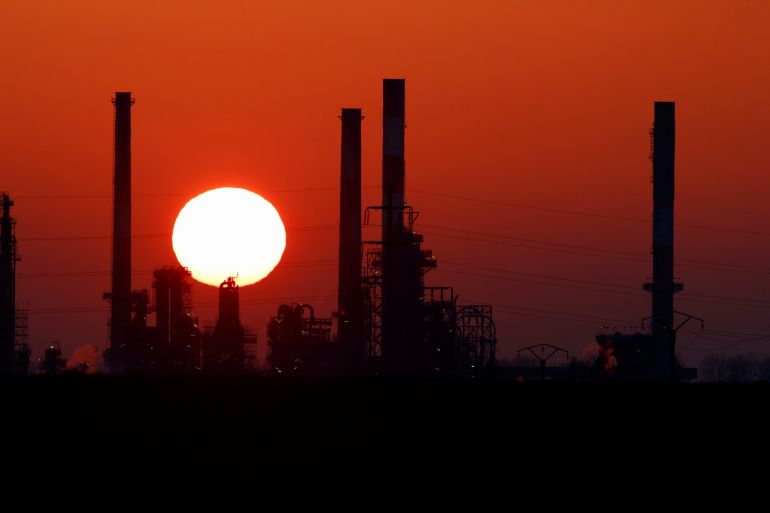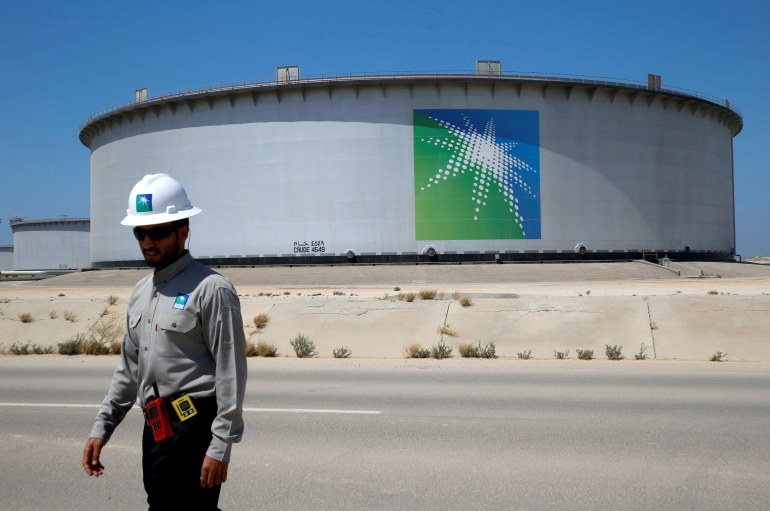OPEC+’s balancing act between crude optimism and pandemic risk
The big question when OPEC and its allies meet on Thursday is whether they’ll decide oil demand has recovered enough to loosen the taps again.

OPEC and its allies have a tough decision to make when they meet on Thursday: Remain cautious and keep supplies tight, or take the current crude price rally as a sign that demand is back and healthy enough to loosen the taps.
“You almost have to be an epidemiologist to understand the markets these days,” Samantha Gross, director of the Energy Security and Climate Initiative at the Brookings Institution, told Al Jazeera.
Keep reading
list of 4 itemsOil prices mixed as Texas refineries reopen after deep freeze
US freeze hits Europe’s fuel oil exports
OPEC+ meeting: Dissenting voices in the ‘black box’
While tightening supply and vaccine optimism have both helped drive crude prices to pre-COVID levels in recent weeks, coronavirus variants continue to threaten the global economic recovery and keep some suppliers wary of flooding the market with more than it can handle.
The Organization of the Petroleum Exporting Countries (OPEC) and its allies led by Russia, an alliance dubbed OPEC+, could discuss allowing as much as 1.5 million barrels per day (bpd) back onto the global market. Under the current agreement, OPEC+ is due to raise production by 500,000 bpd. Currently, seven million barrels still remain offline.
On Tuesday, global benchmark Brent hit $63.71 a barrel while United States West Texas Intermediate (WTI) reached $60.71.
That’s a far cry from last spring, when the coronavirus pandemic pummeled demand for oil, sending crude futures prices spiralling into negative territory for the first time and forcing OPEC+ to rein in output.
Since then, shuttered factories, particularly in China and India, have reopened and grounded flights have taken to the skies. Lockdowns and restrictions have lifted (although not for long in some places).
An unprecedented glut in supply drove prices down last year. But thanks to OPEC+’s production cuts and reviving demand, the market has stabilised. Supply has tightened significantly. And mass vaccination campaigns have boosted optimism about a global economic recovery.
But some analysts still remain a bit sceptical about the staying power of the recent bump in crude prices.
“Is demand coming back for sure? Are the lockdowns lifting for good? With all these new [coronavirus] variants, who knows how long we are going to be in it?” said Gross.
The million-barrel question
Oil output fell further last month after mega-producer Saudi Arabia decided to voluntarily hold back even more of its output than required under the OPEC+ agreement for February and March.
According to a Bloomberg survey, OPEC’s February output fell by the most in eight months after Riyadh slashed its production by almost one million barrels a day or 11 percent.
“Saudi cuts came at a good time along with vaccine optimism, which is why we are seeing this mini oil rally at the moment,” Louise Dickson, an analyst at Rystad Energy, told Al Jazeera.

But the market, still wary of last year’s negative prices, is eagerly looking to see OPEC+’s game plan for bringing back Saudi Arabia’s one million barrels.
“We got here through ten months of very diligent cuts by Saudi Arabia. It’s very unlikely that OPEC+ will switch course on a campaign that has brought oil to $65 a barrel,” said Dickson.
But two of the world’s largest producers may not see eye to eye on what to do on Thursday.
Russia’s deputy prime minister said on Russian television last month that the oil market is rebalanced, signalling an eagerness to boost production. But Saudi Arabia remains cautious.
Riyadh and Moscow have diverged in the past. State budgets help explain why.
The International Monetary Fund reckons Saudi Arabia needs oil to fetch $67.90 to balance its books this year. Russia’s fiscal breakeven price for oil is much lower.
Some analysts say that the market can afford extra barrels at the moment.
“Things are so tight right now that even if OPEC+ brought back 1.3 million barrels per day they would not throw off the market,” said Dickson.
While the pandemic was the big disruptor of last year, the weather in 2021 has not been accommodating, either. Russia, given the green light to boost production, failed to pump enough due to freezing weather.
Winter storms also caused refineries in the US to shut down temporarily.
“The deep freeze in Texas took some oil off the market, and that lost production propped up Brent prices at least in the short term,” Gross told Al Jazeera.
Focused on balance sheets rather than double-digit growth, US shale is not as much of a threat to Brent as it once was, Gross added.
“Clearly they all want to bring back output, but the biggest question is how much of the coronavirus is behind us and that’s hard to say.” Gross said. “We’re not out of it yet.”